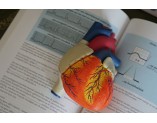ALS
Amyotrophic lateral sclerosis (ALS) is a disorder that involves the function of nerves and muscles. Based on studies conducted amongst the U.S. population, slightly over 5,600 people are diagnosed with ALS each year.
Most people who are diagnosed with ALS are between the ages of 40 and 70, with the average age being 55. It is more common though, in older men and women.
Fifty percent of all people affected with ALS live at least three or more years after diagnosis. Twenty percent live five years or more and up to ten percent will live more than ten years.
What is ALS?
Also known as Lou Gehrig’s disease, ALS is a neurodegenerative disease of the spinal cord and brain. The gradual deterioration of ALS causes motor neurons to be damaged, preventing muscle fibers from accepting instructions from the brain. Usually, the early stages of ALS are only slightly debilitating. Progressively, the disease becomes more incapacitating, ultimately ending in total paralysis.
Signs and Symptoms of ALS
Early signs and symptoms of ALS include:
- Difficulty walking, tripping or difficulty doing your normal daily activities
- Weakness in your leg, feet or ankles
- Hand weakness or clumsiness
- Slurring of speech or trouble swallowing
- Muscle cramps and twitching in your arms, shoulders and tongue
- Difficulty holding your head up or keeping a good posture
ALS often begins in your hands, feet or limbs, and then spreads to other parts of your body. As the disease progresses, your muscles become increasingly weaker. This weakness ultimately affects chewing, speaking, swallowing and breathing.
Caring for a patient with ALS
No one wants to be made helpless, but that is exactly what those who suffer from ALS encounter on a daily basis. The terminal and progressive nature of ALS can have a significant psychological effect, which is why it is important to get some form of additional help when caring for an ALS patient.
Unfortunately, it’s difficult to predict what type of day-to-day care that someone that is suffering from ALS will need, mainly due to the different progressive stages of the disease. The formidable nature of this disease means that practically every aspect of the patient’s life can be affected. As a result, ALS patients require care on a comprehensive scale, including assistance with everyday activities that gradually become harder to perform on their own, like bathing, exercising, dressing and socializing.
Importance of mobility
In the initial stages of ALS, most patients can maintain their independence with the aid of mobility devices, like walkers and wheelchairs. As the disease progresses, the ability to verbally communicate can be lost, but there are numerous assistive devices that can help enable communication in even the final stages of ALS.
When the muscles that regulate respiration are increasingly weakened, breathing becomes more difficult. ALS patients may find they have difficulty sleeping and wake up tired or with a headache. As moderate and severe symptoms like this begin to become more evident, health care professionals can help ease some of these symptoms by providing breathing masks and ventilators. Likewise, as it becomes more difficult to swallow food, caregivers can prepare processed food to help digestion.
It’s hard to overstate how obstructive ALS can be to the activities of daily life, but with the right help, seniors with ALS care can continue to live rich and full lives.
When to get help
Take into account the slow decline of a patient with ALS over months or sometimes years, it can be difficult to determine when the right time for more advanced care is. Typically, patients that are in hospice care are thought to have six months or less to live. When patients with ALS choose to discontinue using a feeding tube or breathing machine, they are likely to benefit from hospice services.
Only a doctor can present a clinical determination of ALS life expectancy. However, there are ALS end stage symptoms that indicate the disease has progressed to a place where it becomes too difficult to manage the patient’s care at home without 24/7 supervision. Some of these symptoms are:
- The patient is no longer mobile and is confined to a wheelchair or bed.
- Verbal communication has become unintelligible or impossible
- The patient requires total assistance with dressing and grooming, eating or is entirely dependent on others for these daily activities
- The patient does not want to be dependent on feeding tubes
- The patient does not wish to be consigned to a ventilator for breathing or wants to discontinue mechanical ventilation
- The patient’s physician may recommend hospice when the time is right. But patients and family members often must act as their own advocates to receive the care they need.
What hospice or advanced care facility is right for a patient with ALS?
It is important to find the appropriate type of long term care facility for your loved one so they can receive the right kind of care as symptoms and condition change.
Look for a long term care facility that offers comprehensive services for patients with ALS:
- Pain control – People with ALS often suffer pain from muscle spasms, stiff joints and immobility. A facility that has specialists in pain management ensures that patients are comfortable.
- Symptom control – A facility that is equipped to help manage difficulty breathing, difficulty communicating, problems eating and drinking, difficulty swallowing, dementia, anxiety and depression.
Care for patients whether they live at home or in a long term care facility, such as residential care homes or nursing homes, may need hospice services if symptoms become too difficult to manage where they live.
Residential care facilities may not have specialized staff capable of providing the necessary long-term hospice care required. If that is the case, adding in-home health services can provide the additional needed services for the patient while also giving instruction to the residential care staff on how to continue care between visits. Hospice home health services may also be an option for the continuing care of the patient as they can provide the necessary in-home advanced care the patient requires. Home health services are more palliative care that can transition later into hospice home health care as the patient’s disease progresses toward end of life.
ALS patients that require a ventilator can only be cared for in a nursing home facility or in their own home. Home health and hospice services along with the patient’s family are required to take responsibility for the ventilator. If this is not an option, a medical ventilator specialist can be privately hired to come in and manage the patient’s ventilator system.
Gastrostomy care can typically be managed by most residential care facilities depending on state licensure requirements and the level of care needed. Nursing homes or in-home health care services are generally the best options for ALS patients that will require feeding tube management.









